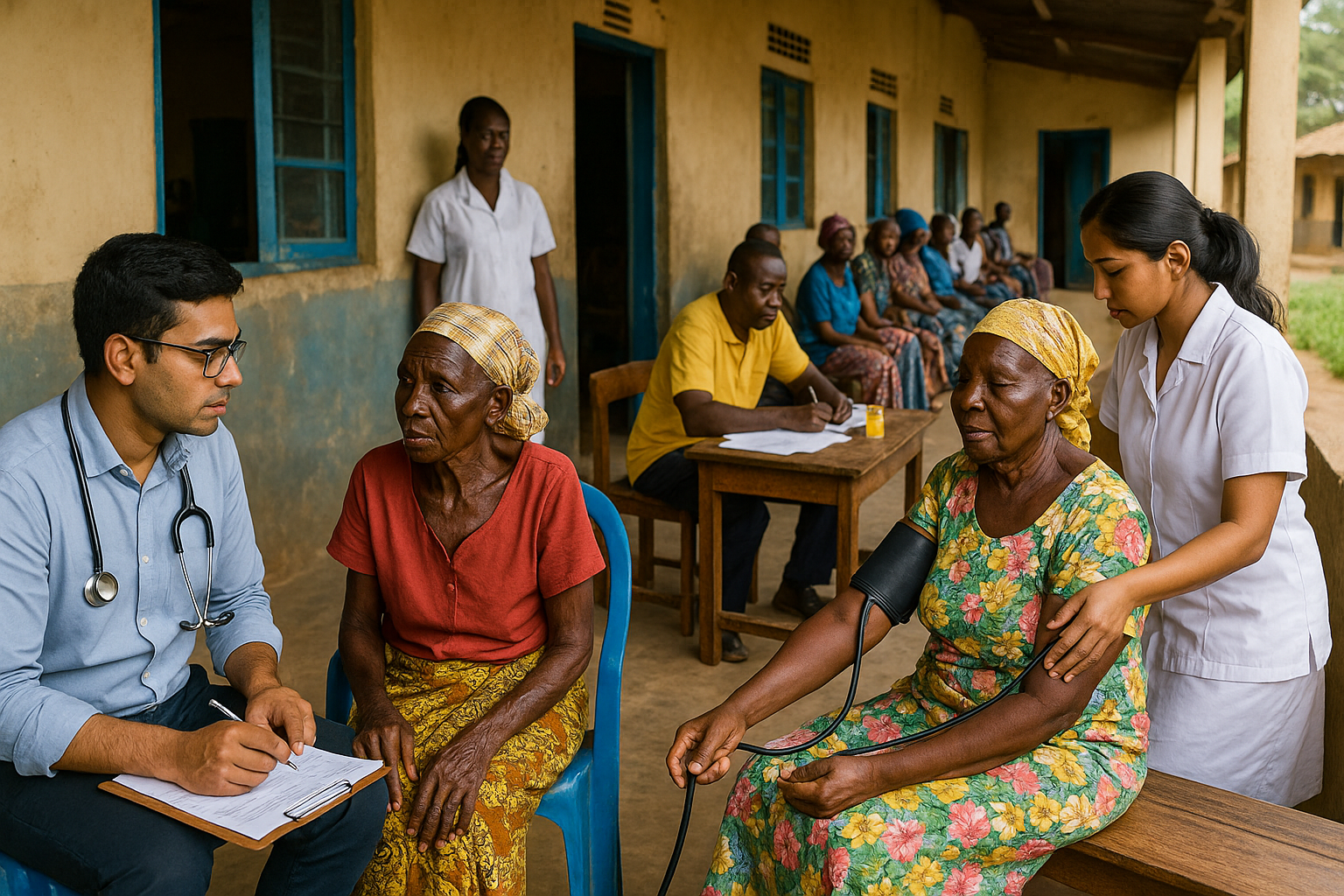Global Lessons in NCD Care: How LMICs Are Reimagining Primary Health Delivery
The World Bank’s compendium showcases 56 integrated primary care models from low- and middle-income countries that effectively manage non-communicable diseases through task-shifting, digital tools, and community engagement. It serves as a practical guide for transforming fragile health systems into resilient, patient-centered platforms for chronic care.

The World Bank, in collaboration with Boston University School of Public Health and supported by research institutions such as the University of Rochester, Karolinska Institutet, the Centre for Chronic Disease Control in India, and the University of Cape Town, has produced a landmark document: "Delivering Primary Care for Non-communicable Diseases: A Compendium of Service Delivery Models in Low and Middle-income Countries." This rich compendium addresses the global crisis of non-communicable diseases (NCDs), which are now responsible for 74% of global deaths, most of them in low- and middle-income countries (LMICs). In these settings, health systems already overburdened by infectious diseases and maternal health issues are now grappling with a surge in diabetes, hypertension, cancers, and mental health conditions. The compendium provides a compelling roadmap for how health systems can restructure themselves to meet the rising tide of chronic illness by documenting 56 innovative and effective models of care that have been implemented across the globe.
Reshaping Primary Care for the Chronic Disease Era
The compendium was born out of a systematic review of 156 studies and nearly 10,000 screened documents, both from academic databases and grey literature. These studies yielded practical examples of integrated care models deployed across Africa, Asia, Latin America, and multi-country partnerships. What makes this report unique is its laser focus on implementation. It goes beyond recommendations to show how health systems, under severe resource constraints, have reorganized themselves to deliver care that is not only clinically effective but also equitable, affordable, and sustainable. The models demonstrate how chronic disease care can be embedded within primary health care (PHC) systems that have traditionally focused on acute, episodic illnesses.
Task-shifting: A New Workforce Architecture
A recurring theme in the case studies is task-shifting, a strategy that reassigns care duties from specialists to non-specialist health workers such as nurses, auxiliary staff, and trained community members. This approach was especially powerful in settings where physicians are few and often concentrated in urban hospitals. In Kenya’s Kibera slums, nurse-led management of hypertension and diabetes proved effective in improving outcomes while freeing doctors to address more complex needs. Similarly, the SINEMA model in rural China equipped village doctors with a mobile app and clinical algorithms to manage stroke patients, significantly reducing blood pressure and hospitalizations at an annual per capita cost of just $24.30. The model used Android-based tools and daily voice messages in local dialects to support adherence and patient education.
Digital Tools as Catalysts of Change
Digital health interventions are woven throughout the compendium, illustrating how technology is closing gaps in access, monitoring, and clinical quality. In Peru, a telehealth-supported diabetic retinopathy network linked rural PHC centers with specialists, leading to early detection and treatment of complications. In India, the mWellcare initiative used mobile decision support systems to guide frontline providers in managing patients with multiple chronic conditions. These digital tools not only empower non-specialists but also make data collection, triaging, and referrals more efficient. Models like Thailand’s WinCare app or Malaysia’s CORFIS program show that well-designed digital platforms can act as scalable solutions in both rural and urban settings.
The Power of Community and Peer Support
Several models emphasize community engagement and peer-led interventions as central to successful chronic care. The Peer Leader Support Program (PLSP) in China trained individuals living with diabetes to lead support groups, deliver lifestyle education, and provide emotional encouragement. This peer-to-peer structure significantly improved blood sugar control, self-efficacy, and blood pressure. In Zimbabwe, the now-celebrated Friendship Bench model trained grandmothers to deliver cognitive behavioral therapy for depression on public park benches, an approach that was culturally sensitive, non-stigmatizing, and remarkably effective. These models highlight how trust, empathy, and shared experience can be powerful tools in changing health behaviors and improving outcomes.
Building Integrated, Resilient Health Systems
The case studies also emphasize the importance of integrating services across diseases. In Malawi, the Integrated Chronic Care Clinic (IC3) merged HIV and non-communicable disease (NCD) care into a single service point, recognizing the overlap in patient populations and chronic care needs. In Costa Rica and South Africa, models were built around multi-disease screening campaigns that enabled early detection of conditions like diabetes, hypertension, and cervical cancer in one visit. Such integrated approaches reduce the burden on patients and improve health system efficiency. Importantly, the compendium emphasizes the need for strong policy support, leadership, and partnerships to ensure that these models are not isolated experiments but scalable, system-level innovations.
Ultimately, the compendium offers more than a collection of promising models; it provides a vision for how countries can adapt their health systems to the realities of a chronic disease world. It champions evidence-based innovation, cross-sectoral collaboration, and community participation as the cornerstones of resilient PHC. In doing so, it not only guides policymakers but also inspires practitioners and implementers to build a future where even the poorest and most remote communities receive quality, integrated care for conditions that were once left to worsen in the shadows.
- READ MORE ON:
- World Bank
- non-communicable diseases
- LMICs
- NCDs
- primary health care
- PHC
- FIRST PUBLISHED IN:
- Devdiscourse
ALSO READ
Tamil Nadu and World Bank Forge Strong Ties for Progressive Development
World Bank Lifts Nuclear Energy Funding Ban in Developing Nations
India's Economic Future Amid Global Uncertainties: A World Bank Perspective
Global Economic Growth Stalled by Trade Wars, Says World Bank
World Bank Lifts Ban on Nuclear Energy Funding










